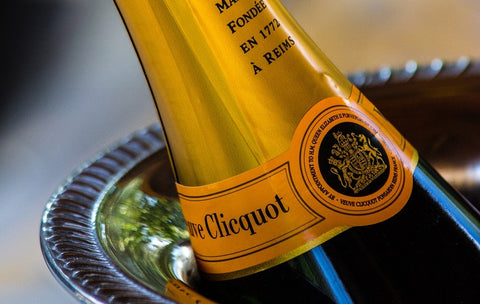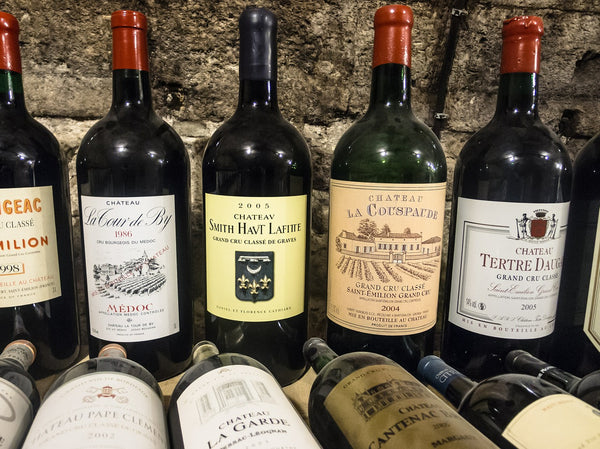Oldest Champagne Bottle: 170 Years Ago Vs. Today – Moncharm Fine Wine Merchants
Champagne Today Fine Wine Blog Old vs. New Champagne Oldest Champagne

The 170-year-old Champagne was found in the summer of 2010 in a newfound shipwreck at the bottom of the Baltic Sea. The 168 bottles were uncorked, and came to be known as the world’s oldest Champagne bottles in good condition today.
The discovery was a great opportunity for us to learn more about Champagne from 200 years ago, how it was made, how the tradition was different, and most of all – what did it taste like? Researchers wondered as well, having studied its chemical composition over the past few years. We summarize their findings below.
The Champagne landed horizontally by luck, sat at a constant temperature between 4 and 6 degrees, in dark surroundings, and under just the right pressure at the bottom of the sea.
"After 170 years of deep-sea aging in close-to-perfect conditions, these sleeping Champagne bottles awoke to tell us a chapter of the story of winemaking," the researchers said in their recently published study dated 20th April 2015.
Divers were only able to salvage 145 bottles in good condition, with the rest found to be contaminated, or simply popping the cork due to the sudden pressure change when they were brought to surface.
Out of the 145 bottles, 96 of them were found to be from the Juglar Champagne house (which closed down in 1829), produced in the same family that owns Jacquesson today. Another 46 bottles represented Veuve Clicquot – who was selling a lot of Champagne in the Baltic at that time – and were dated 1841-1850.
Last but not least, 4 bottles represented Heidsieck & Co.
Secondly, the Champagne contained higher concentrations of iron (likely because of the different wine vessels that were used at that time, which contained metal), copper and table salt as compared to modern wines.
All of this has resulted in a sweet taste, with an aroma “of mature fruit, with yellow raisin tones and a considerable hint of tobacco”, a clear acidity to back up its sweetness, and “an extremely clear flavour of oak cast storage.”
Even though incredibly old, there was also “a freshness about the wine” – according to sommelier Ella Grüssner Cromwell-Morgan, who sampled the very first bottle that was brought from the wreck.
Additionally, the chemist who studied the wine’s composition was only allowed to drink 0.1 millimetres. Even so, he noted that the quantity was “adequate” and that the Champagne was great – “It was amazing. It had a tobacco aroma. It was such a great moment,” he said.
In May 2012, 11 more bottles were auctioned in Mariehamn, Finland (close to the original location where the bottles were found) for $156.000. A Veuve Clicquot was the highest priced bottle, fetching €15.000 itself.
Three of our favourite history-making bottles include:
Please take a moment to look through our selection, and if there is anything we can help with or for any questions or queries, please feel free to give us a call or write us a quick message. Our experts will respond promptly, and will gladly jump in to help!
Image source: Flickr
Facebook,Twitter,Linkedin,Pinterest,Google+,Moncharm
Oldest Champagne Bottle: 170 Years Ago Vs. Today
Champagne Today Fine Wine Blog Old vs. New Champagne Oldest Champagne

The 170-year-old Champagne was found in the summer of 2010 in a newfound shipwreck at the bottom of the Baltic Sea. The 168 bottles were uncorked, and came to be known as the world’s oldest Champagne bottles in good condition today.
The discovery was a great opportunity for us to learn more about Champagne from 200 years ago, how it was made, how the tradition was different, and most of all – what did it taste like? Researchers wondered as well, having studied its chemical composition over the past few years. We summarize their findings below.
About The World's Oldest Champagne
Researchers were amazed by how well the 168 bottles found have aged, noting that the conditions at the bottom of the Sea were nearly perfect for aging.The Champagne landed horizontally by luck, sat at a constant temperature between 4 and 6 degrees, in dark surroundings, and under just the right pressure at the bottom of the sea.
"After 170 years of deep-sea aging in close-to-perfect conditions, these sleeping Champagne bottles awoke to tell us a chapter of the story of winemaking," the researchers said in their recently published study dated 20th April 2015.
Divers were only able to salvage 145 bottles in good condition, with the rest found to be contaminated, or simply popping the cork due to the sudden pressure change when they were brought to surface.
Out of the 145 bottles, 96 of them were found to be from the Juglar Champagne house (which closed down in 1829), produced in the same family that owns Jacquesson today. Another 46 bottles represented Veuve Clicquot – who was selling a lot of Champagne in the Baltic at that time – and were dated 1841-1850.
Last but not least, 4 bottles represented Heidsieck & Co.
Tasting Notes
Researchers began by comparing its chemical composition to that of modern champagne, and have found that they were very similar aside from a few notable distinctions. First off, the oldest Champagne bottles had around 20 times more sugar in their composition (150 grams per liter) – a characteristic of people’s tastes at the time.Secondly, the Champagne contained higher concentrations of iron (likely because of the different wine vessels that were used at that time, which contained metal), copper and table salt as compared to modern wines.
All of this has resulted in a sweet taste, with an aroma “of mature fruit, with yellow raisin tones and a considerable hint of tobacco”, a clear acidity to back up its sweetness, and “an extremely clear flavour of oak cast storage.”
Even though incredibly old, there was also “a freshness about the wine” – according to sommelier Ella Grüssner Cromwell-Morgan, who sampled the very first bottle that was brought from the wreck.
Additionally, the chemist who studied the wine’s composition was only allowed to drink 0.1 millimetres. Even so, he noted that the quantity was “adequate” and that the Champagne was great – “It was amazing. It had a tobacco aroma. It was such a great moment,” he said.
Oldest Champagne Bottles On Auction
At the first auction in 2011, a Juglar bottle was sold for €24.000, while a Veuve Clicquot bottle fetched €30.000. The latter set a new record over the previous $84.700 from 2008 held by two bottles of 1959 Dom Perignon Rosé.In May 2012, 11 more bottles were auctioned in Mariehamn, Finland (close to the original location where the bottles were found) for $156.000. A Veuve Clicquot was the highest priced bottle, fetching €15.000 itself.
Back To Modern Times
The shipwreck was a great find, attached to it an opportunity to discover the depth of a previously missing piece of history. In modern times however, we have the chance to make our own history, with our own modern and reputable Champagne houses.Three of our favourite history-making bottles include:
- This Krug, 1996 – an incredible Champagne house with a track record of producing some of the world’s best Champagnes.
- This Louis Roderer Cristal, 2005 – today one of the only still independent Champagne houses, it produces this famous Champagne Cristal.
- This Taittinger Comtes de Champagne Rose, 2005 – the flagship wine of the Taittinger Champagne house, a Maison de Champagne with a rich, globally recognized spanning over 280 years.
Make Your Pick
You can find all of these amazing wines – and more – in our collection of world-class labels at the Moncharm wine shop.Please take a moment to look through our selection, and if there is anything we can help with or for any questions or queries, please feel free to give us a call or write us a quick message. Our experts will respond promptly, and will gladly jump in to help!
Image source: Flickr


